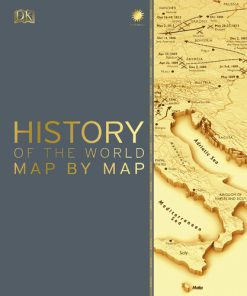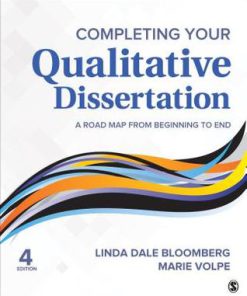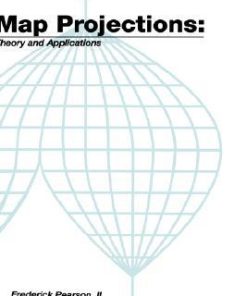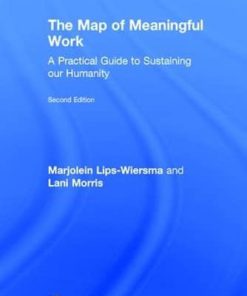Map Librarianship A Guide to Geoliteracy Map and GIS Resources and Services 1st edition by Susan Elizabeth Ward Aber, Jeremy Ward Aber 0081000219 9780081000458
$50.00 Original price was: $50.00.$25.00Current price is: $25.00.
Map Librarianship A Guide to Geoliteracy Map and GIS Resources and Services 1st edition by Susan Elizabeth Ward Aber, Jeremy Ward Aber 0081000219 9780081000458 – Ebook PDF Instant Download/DeliveryISBN:
Full download Map Librarianship A Guide to Geoliteracy Map and GIS Resources and Services 1st edition after payment.

Product details:
ISBN-10 : 0081000219
ISBN-13 : 9780081000458
Author: Susan Elizabeth Ward Aber, Jeremy Ward Aber
Map Librarianship identifies basic geoliteracy concepts and enhances reference and instruction skills by providing details on finding, downloading, delivering, and assessing maps, remotely sensed imagery, and other geospatial resources and services, primarily from trusted government sources. By offering descriptions of traditional maps, geographic information systems (GIS), remote sensing, and other geospatial technologies, the book provides a timely and practical guide for the map and geospatial librarian to blend confidence in traditional library skill sets.
Map Librarianship A Guide to Geoliteracy Map and GIS Resources and Services 1st Table of contents:
Chapter 1: Introduction to Maps and Librarians
Abstract
1.1 Maps: Our Spatial Compass
1.2 What is Geography?
1.3 Historic Progression of Maps and Cartographers
1.4 What Are NeoGeography and NeoCartography?
1.5 Historic Progression of Map Librarianship
1.6 What Is NeoMap Librarianship?
Chapter 2: Spatial Thinking and Geo-Literacy
Abstract
2.1 Geo-Literacy: Location-Based Spatial Thinking
2.2 What Is a Map?
2.3 Reference and Thematic Maps
2.4 Mapping Data—Map Symbology Techniques
2.5 The Choropleth Map
2.6 The Dot Density Map
2.7 The Proportional Symbol Map
2.8 The Cartogram
2.9 Mapping Terrain
2.10 Mapping Data—Map Types
2.11 Aeronautical Charts
2.12 Atlas and Gazetteers
2.13 Bird’s-Eye View
2.14 Coal, Oil, and Natural Gas Investigation Maps
2.15 Geologic and Mining
2.16 Historic
2.17 National Parks
2.18 Nautical Charts
2.19 Physiographic
2.20 Planimetric
2.21 Political
2.22 Soil
2.23 Topographic
2.24 Globes and Raised-Relief Models
2.25 Aerial Photography
2.26 Conclusions
Chapter 3: Basic Map Concepts—The Science of Cartography
Abstract
3.1 Scale and Resolution
3.2 Geodesy
3.3 Projections
3.4 North Defined
3.5 Legends
3.6 Grids and Graticules
3.7 Latitude and Longitude
3.8 Universal Transverse Mercator Coordinate System
3.9 State Plane Coordinate System
3.10 Public Land Survey System
3.11 Conclusions
Chapter 4: Geographic Information Systems and Remote Sensing
Abstract
4.1 What is a Geographic Information System?
4.2 Layering the Data
4.3 What is Remote Sensing?
4.4 The Difference Between Vector and Raster Data
4.5 Sources of Raster Data
4.6 Web GIS as a Component of NeoGeography
4.7 Volunteered Geographic Information
4.8 The Role of GPS in VGI
4.9 Conclusions
Chapter 5: Terrain Mapping Meets Digital Data
Abstract
5.1 Digitally Representing Terrain
5.2 Digital Raster Graphics
5.3 Digital Line Graphs
5.4 Digital Elevation Models
5.5 Conclusions
Chapter 6: Map and Geospatial Librarianship
Abstract
6.1 Introduction
6.2 Academic Preparation and Continuing Education
6.3 History and Transitions in Map and Geospatial Librarianship
6.4 GeoWeb and Geospatial Librarianship
6.5 Historical Beginnings—ALA and MAGIRT
6.6 Core Competencies: ALA and MAGIRT
6.7 History of Academic Curriculum to Support Map Librarianship
6.8 Transitions in Academic Curriculum to Support Map Librarianship
6.9 Job Opportunities and Challenges in Map and Geospatial Librarianship
6.10 Map Library Work Space and Equipment
6.11 Conclusions
Chapter 7: Geospatial Resources and Instruction Services
Abstract
7.1 Introduction
7.2 Navigating the Labyrinth—Legal Considerations
7.3 Navigating the Labyrinth—Where to Go to Get What?
7.4 Guide Through GIS and Remote Sensing Software
7.5 Guide to Finding Maps, Data, and Other Geospatial Resources
7.6 Conclusions
Chapter 8: Reference Desk
Abstract
8.1 Introduction
8.2 Location Matters
8.3 Reference Librarian Duties
8.4 Types of Questions
8.5 Support Groups for Map Librarianship
8.6 Citing and Referencing Maps and Geospatial Data
8.7 Conclusions
Chapter 9: Collection Development
Abstract
9.1 Introduction
9.2 Knowing Users and Use of Map and GIS Resources
9.3 Collection Development Policy
9.4 CDP Examples
9.5 Conclusions
Chapter 10: Cataloging and Classifying
Abstract
10.1 Introduction
10.2 A Brief History of Cataloging Maps
10.3 A Brief History of Classifying Maps
10.4 Classification Systems and Maps
10.5 Cataloging Cartographic Resources
10.6 Conclusions
Chapter 11: Promotion and Summary of Map and GIS Resources and Services
Abstract
11.1 Information Challenges
11.2 Promotion of Library Resources
11.3 Geography Awareness Week, GIS Day, and Earth Science Week
11.4 Geocaching and GPS Activities
11.5 Conclusion
11.6 In Summary of Map Librarianship
People also search for Map Librarianship A Guide to Geoliteracy Map and GIS Resources and Services 1st:
whole person librarianship map
areas of librarianship
what is librarianship
map librarian
map librarian jobs
Tags: Map Librarianship, Geoliteracy Map, GIS Resources, Susan Elizabeth Ward Aber, Jeremy Ward Aber
You may also like…
Romance - Science Fiction Romance
The Map of Tiny Perfect Things 1st edition by Lev Grossman 0316281225 9780316281225
Business & Economics
Reference - Writing
Completing Your Qualitative Dissertation: A Road Map from Beginning to End Linda Dale Bloomberg
Engineering
Map Projections Theory and Applications 1st edition by Frederick Pearson 1351433693 9781351433693
History - Military History
Business & Economics - Responsibility and Business Ethics
The Map of Meaningful Work 2e A Practical Guide to Sustaining our Humanity 2nd Edition Lips-Wiersma












